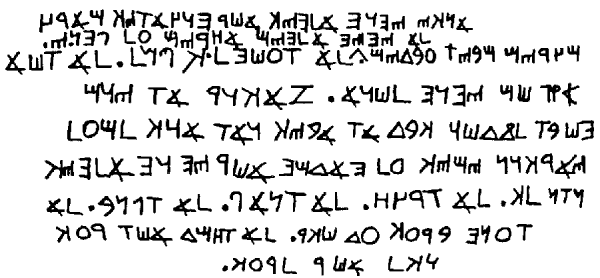 |
Science Frontiers ONLINE No. 25: Jan-Feb 1983 |
|
|
A FAR-WANDERING LOST TRIBE?
Imagine hiking near Los Lunas, New Mexico, and coming upon a huge basalt boulder inscribed as shown in the illustration.

This is obviously not an Indian petroglyph. Rather, it is the Ten Commandments set down in an old Hebrew script. The script and its translation seem unmysterious. What everyone wants to know is: Who chiseled it and when? It was apparently discovered in the 1880s. Harvard anthropologist Frank C. Hibben visited the site in 1930 and pronounced the inscription to be at least 100 years old. Who in New Mexico in 1830 knew ancient Hebrew? The inscription may be much older, for the whole boulder, weighing 60-80 tons, is tipped 20-30�, probably by geological forces, so that the lines of script are tilted.
(Underwood, L. Lyle; "The Los Lunas Inscription," Epigraphic Society, Occasional Publications, vol. 10, no. 237, 1982.)
Comment. Is it all a hoax? Some think so. It is easier to live with a hoax than with the thought of a Hebrew outpost in New Mexico a couple thousand years ago. It should be remarked that there are many purported Hebrew and Roman finds in the American Southwest; viz, the Tucson lead crosses with their Roman inscriptions.
Reference. More anomalous epigraphy is to be found in our Handbook: Ancient Man. For more on this book, visit: here.